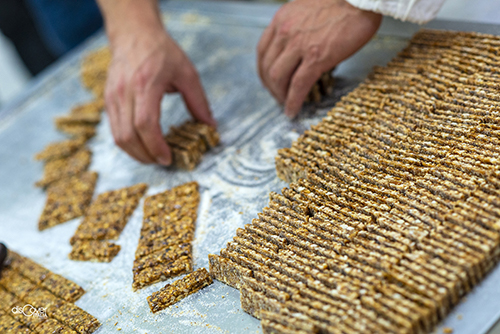
EAT/DRINK
in the Samnium
Among the Samnium mountains: wines, oils and many delicacies. Kilometers of rows which, from season to season characterise the landscape and the identity of the territory.
The Wine - Thousands of vine-growing hectares cultivated from the Taburno to the Telesina valley, from the slopes of the Matese to the Caudine valley. The Samnium produces half of the Campania wine, with seven native vines of ancient lineage dominating it: Aglianico, Piedirosso (Per’e palummo in dialect), Sciascinoso also known as “olivella”, a red berried wine, Falanghina, Fiano and the white-berried Greco. And the red-berried Barbera del Sannio, which triumphs in Castelvenere, the most vine-grown municipality, where the subsoil keeps and hands down characteristic cellars dug into thetuff. A viticulture with a great history and equally great qualities, testified by two DOC, Sannio and Falanghina del Sannio, by the DOCG Aglianico del Taburno and by the Benevento PGI.

The hundred years of Cantina Iannella in Torrecuso, a family history linked to the wine
The summer sun envelops the plants from every direction since early morning. This way, the grains get bigger in the still green bunches, but which are already distinguished among the dense foliage. The long rows accompany the way in a sequence that unravels from hill to hill. Only interrupted by the silvery green of strong olive trees, another constant presence in the Samnim countryside. After having passed the red heights of Torrecuso roofs, dominated by the profile of the Caracciolo-Cito palace, the vineyards guide along a slope which leads to the entrance of an edifice where the grapes are the protagonist in every corner, detail, decorative element.
 The oil- Many vineyards, but also many olive groves surround the Samnium hills, protagonists of knowledge and traditions that are confused with the most ancient presences of man in this land always generous with whoever respects it. And the long-lived olive trees are the memory of the good soils and the faithful work which, today as yesterday, serves to draw from their fruits what extravirgin olive oil can best give to the palate and to health. The ancient trees, the large trunks shaped by the elements that characterise the landscape, belong to the three cultivars of all time: the Nettle, with tall foliage and elongated fruits, the Orchard-Grown with pendulous branches and apple flavour which has earned it the name of Melella (from “Mela” : apple) and the Racioppella, which constantly gives its bunches of olives. A continuous attention, the harvest is still done by hand and cold pressing on the same day are the other determining elements for the quality of the Samnite DOP, the Sannio Caudino Telesino extra virgin olive Oil and the Sannio Colline Beneventane extra virgin olive oil. A special oil, to taste in absolute simplicity on a slice of bread, for example of saragolla, which is an ancient durum wheat still cultivated throughout Samnium. With the flour, the criscito, which is the mother yeast, for the first rising and the brewer’s yeast for the second, you can make loaves cooked on firewood with the characteristic straw-yellow soft part inside and with a crunchy crust, ideal for trying the oil and to combine with discretion the cheeses and cured meats to which the extensive livestock of the Samnite lands has preserved authentic and genuine flavours. There is a wide choice and full of embarrassments, due to the high level of quality of the various productions. It is better to let yourself be guided by what each territory, village and district has to offer of special, because the variety of the offer is everywhere full of surprises.
The oil- Many vineyards, but also many olive groves surround the Samnium hills, protagonists of knowledge and traditions that are confused with the most ancient presences of man in this land always generous with whoever respects it. And the long-lived olive trees are the memory of the good soils and the faithful work which, today as yesterday, serves to draw from their fruits what extravirgin olive oil can best give to the palate and to health. The ancient trees, the large trunks shaped by the elements that characterise the landscape, belong to the three cultivars of all time: the Nettle, with tall foliage and elongated fruits, the Orchard-Grown with pendulous branches and apple flavour which has earned it the name of Melella (from “Mela” : apple) and the Racioppella, which constantly gives its bunches of olives. A continuous attention, the harvest is still done by hand and cold pressing on the same day are the other determining elements for the quality of the Samnite DOP, the Sannio Caudino Telesino extra virgin olive Oil and the Sannio Colline Beneventane extra virgin olive oil. A special oil, to taste in absolute simplicity on a slice of bread, for example of saragolla, which is an ancient durum wheat still cultivated throughout Samnium. With the flour, the criscito, which is the mother yeast, for the first rising and the brewer’s yeast for the second, you can make loaves cooked on firewood with the characteristic straw-yellow soft part inside and with a crunchy crust, ideal for trying the oil and to combine with discretion the cheeses and cured meats to which the extensive livestock of the Samnite lands has preserved authentic and genuine flavours. There is a wide choice and full of embarrassments, due to the high level of quality of the various productions. It is better to let yourself be guided by what each territory, village and district has to offer of special, because the variety of the offer is everywhere full of surprises.
The cheeses -In the Samnium, transhumance land, the cattle breeding, of Podolica breed particularly, of sheep, goats and buffaloes, in addition to meat, offer zero-meter milk for cheeses. The characteristic caciocavallo cheese can be the refine Podolico, buffolo, smoked or the unique one from Castelfranco and the other villages of the Miscano valley, made from the milk of Brown breed cows. Without forgetting the “impiccato” (hanged) caciocavallo of Apice. Then the provola cheese, of cow and buffalo, also smoked. And the chamois ones, without forgetting the ricotta, fresh and dried, from cow, buffalo, goat or sheep. Speaking about sheep, this is a land of Laticauda sheep…
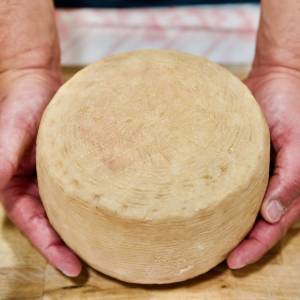
In Vitulano pecorino cheese, the aroma of the pastures between the Samnium mountains
The sense of smell is a safe guide through the small courtyard, which welcomes you with the bright red of the geraniums overlooking the square windows. The strongly scented trace and the curiosity that accompanies it lead to a side door, barely half-closed. There the aroma is more noticeable. A call, even urgent, to cross the threshold, to identify the origin and, especially, its nature. The first eye-catcher no longer leaves doubts: on a metal shelf there are inviting cheeses with a yellowish colour lined up, of different shades, evidently for different aging levels. Some of these cheeses have red dots.
The fat-tailed sheep (lata cauda) have been grazing on the Samnium hills for almost three centuries, the result of a crossbreeding between the Apennine sheep and the Berber (or Barbaresca) sheep imported at the time of Charles III of Bourbon. From Naples, the new breed then spread in the Samnium, in Irpinia and in part of Caserta. And in these areas, after having been on the verge of extinction, it has been recovered thanks to small family farms aimed at dairy production. From the white fat-tailed sheep’s milk you obtain the famous Laticauda pecorino cheese. a Campania PAT (Traditional agri-food production), sold fresh, semi mature or aged between 4 and 12 months. The various mountain herbs with which the Laticauda is fed make it special, including particularly the Ladino clover, which contributes to the special flavour of its renowned ricotta.
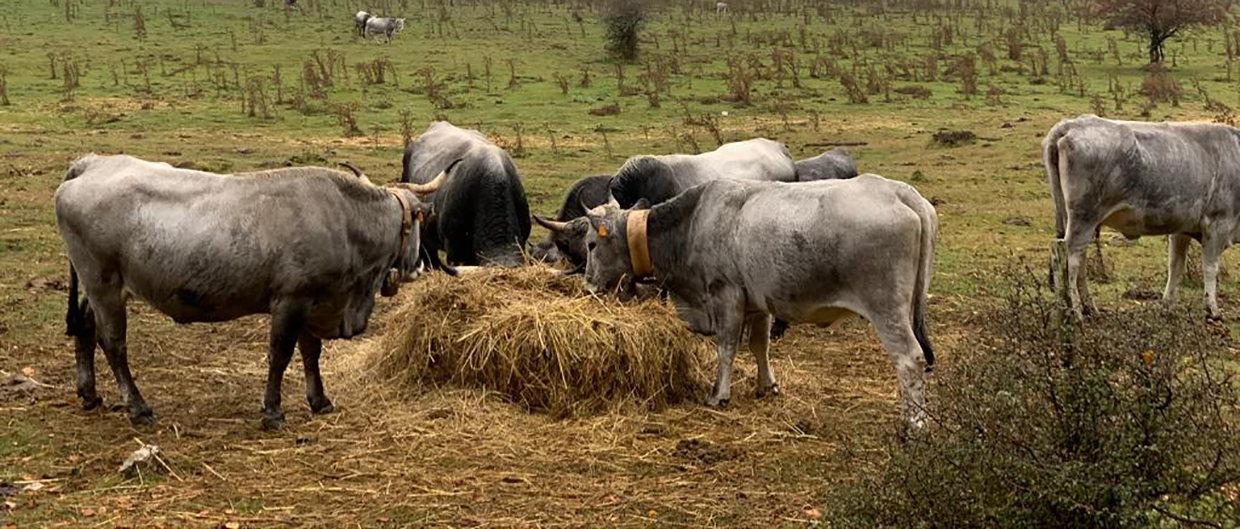
The meats - Acorns, chestnuts and nuts are not lacking in the Samnium land, as well as bran and corn and, therefore, pigs either, particularly the black one. Typical products are made such as the soppressata, the capocollo and Samnium sausage. In Castelpoto, in the Caudine valley on the slopes of the Taburno, the sausage is red because while making it ground chilli pepper is added to the pork with lard and pancetta. The ground chilli is a local product too: the smaller “paupali” are dried outdoors, then toasted in a wood-fired oven and then ground and added to the meat with garlic, wild fennel and salt. The red sausages, a Slow Food Presidium, can be sweet or spicy and you can taste them cooked or preferably in slices on homemade bread or on “pane cunzat ” from Castelpoto. It is a sort of pizza with raisins and pork rinds.
The mountain air, the climate at 830 meters above sea level and a process improved over the centuries in its various phases are the “secret” of Pietraroja ham, already renowned in the eighteenth century. In addition to the quality of the meat and the careful aging, the slow natural drying natural process in the cellars of the village on Mutria mountain makes the difference, as well as a light smoking with wood from the nearby forests.
The vegetables - unmissable in the Samnium recipes, onions are widely cultivated in the plain areas or in the medium sized hills. But among all of them, the gold Bonea onion stands out, with its unique aroma. The flavour of the Pietrelcina artichokes are very delicate, from small domestic lands cultivated following ancient knowledge. Collected in bundles of four, tied with the reeds collected on the banks of the Tammaro, they are the protagonists of a traditional festival in May. Among the vegetable specialties, the San Lupo bean, for the climate at an altitude of 500 meters and the peculiarities of the soil, is undoubtedly worthy of the Queen, as it is differently known, in honor of Marie Thérèse of Bourbon who considerably appreciated it.
The fruits - Another regal product is the PGI annurca apple, with two thousand years of history. It is also yielded in the Caudina and Telesina valleys and in the area of the Taburno. And then other ancient apples: the Sergente, zitella and the limoncella, very refined for its slightly sour white pulp, from which a typical cider is also obtained, very popular in ancient times among the farmers. Among so many wine grapes, there is instead, for the table, the cornicella grape. And in Tocco Caudio and in the nearby towns of the regional park of Taburno-Camposauro, the cherries are special. Red, very sweet, also ideal candied or in alcohol.
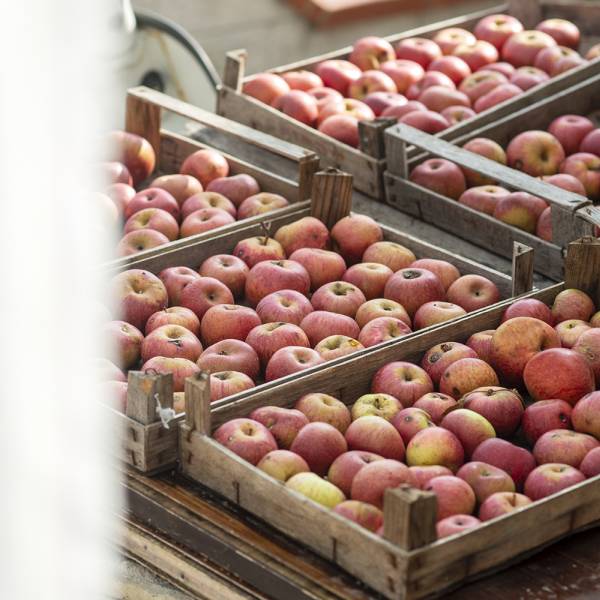
The comeback of the Campania Melannurca, the Romans' favourite red apple
It is with the autumn equinox that the time for the apples arrive in the valleys of the Lower Samnium.
The mushrooms and the truffls - With mountains and woods, the Samnium land is rich in mushrooms: black and white porcino, the poplar mushrooms, the honey mushrooms, the parasols, ovuli, retelle, scardelle, virni. And the historic beech woods of the Taburno offer the humus suitable for the scorzone, a large summer truffle, similar to the black truffle and very aromatic.

Enzeta, Panarana and Selvaggia, the ladies of the autumn in Vitulano
Every year, in autumn, in Vitulano, the protagonist returns, the real lady of the mountains. The chestnut is a typical product of Vitulano, strictly linked not only to the culinary tradition of the place, but to its social and economic history. Chestnuts have always represented a source of important livelihood for the local inhabitants, particularly for the poorest sections of society.
TORRONE AND TORRONCINI
(Nougats and small nougats)
Egg white, honey, hazelnuts and almonds. These are the basic ingredients of one of Benevento excellences, so old that the Roman poet Martial already mentioned it among the characteristic products of the city. And the cupedia, to which Titus Livius gave a samnite origin, was much appreciated by the Romans. The ancient and the modern ones. So much that since Benevento was the territory of the Papal State, when in the seventeenth century the torroni started being known and appreciated outside the Samnite city, they were sent to the Eternal City as a present to the high prelates. And in homage to the Pope, in the Eighteenth century the innovation of the “torrone del Papa” (Pope’s torrone) also arrived. But it was affirmed with the Bourbons, who made of the Benevento “copeta” the sweet of the Neapolitan Christmas tradition. Therefore the “torrone della Regina” (Queen’s torrone), preferred by Ferdinand I, was added to the other tastes which in the meantime were differentiated from the original version. What had never changed was the rigorously artisanal processig, respected in Benevento and in the other towns where the torrone production became popular, such as Santa Croce del Sannio, Montefalcone in Val Fortone and in San Marco de’ Cavoti, where in 1891 the "torrone croccantino" (crunchy) appeared.
Today the torrone of Benevento, an PGI product is present on the market all year round with a large variety of flavours, from coffee to citrus and fruits essences.
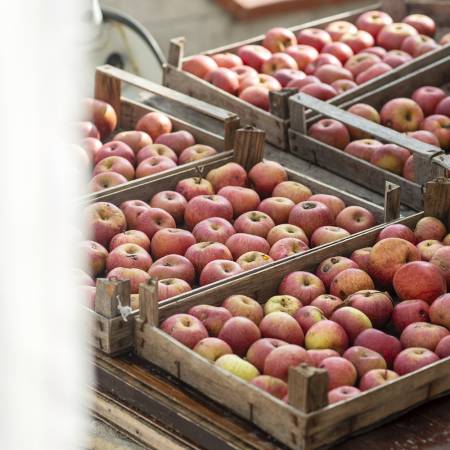
The comeback of the Campania Melannurca, the Romans' favourite red apple
It is with the autumn equinox that the time for the apples arrive in the valleys of the Lower Samnium.
The recipe
Tuna stuffed peppers
We start from the peppers, which are the small, round, sweet and fleshy papaccelle, typical local production. Remove the stalk and the seeds, boil then in water and vinegar. Then, fill them with a mixture of tuna in oil, capers, anchovies, spices and minced herbs. And preserved in oil, of course with a Samnite extra virgin one. They are an excellent antipasto or even a versatile side dish.



Comments powered by CComment